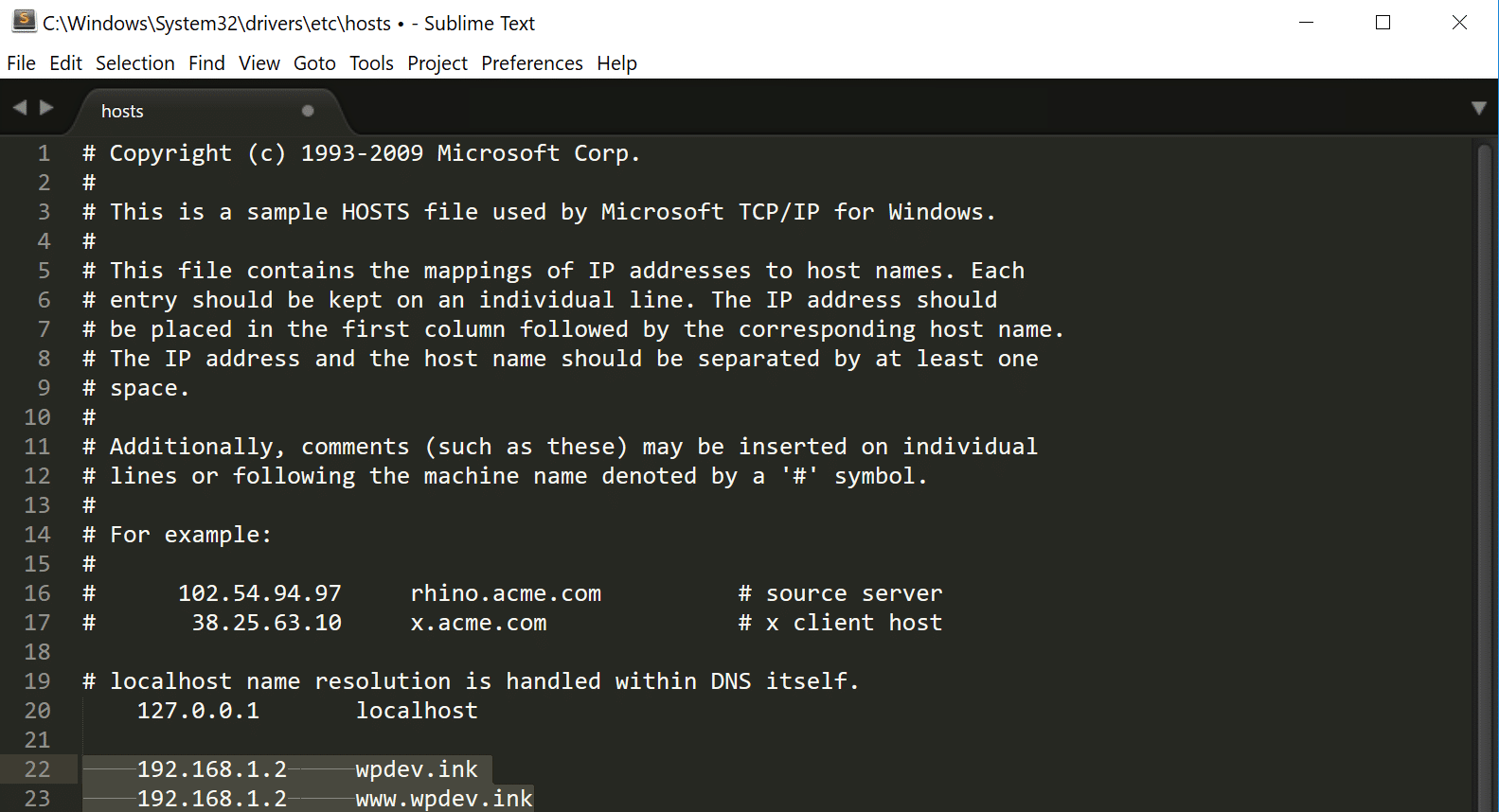
Modifying your hosts file enables you to override the domain name system (DNS) for a domain on a specific machine.
DNS management is useful when you want to test your site without the test link prior to going live with SSL, verify that an alias site works prior to DNS changes, and for other DNS-related reasons.
Modifying your hosts file causes your local machine to look directly at the Internet Protocol (IP) address that you specify. Modifying the hosts file involves adding two entries to it. Each entry contains the IP address to which you want the site to resolve and a version of the Internet address.
64.49.219.194 www.domain.com
64.49.219.194 domain.com
This article provides instructions for locating and editing the hosts file on the following operating systems:
- Microsoft® Windows® 10, Windows 8, Windows 7, and Windows Vista™
- Microsoft Windows NT™, Windows 2000, and Windows XP
- Linux®
- MacOS® X versions 10.0 through 10.1.5
- MacOS X versions 10.6 through 10.12
After you add the domain information and save the file, your system begins to resolve to the IP address that you specified. When testing is complete, remove these entries.
Windows
If you are using a Microsoft operating system like Windows 10, Windows 8, Windows 7, and Windows Vista you must run Microsoft Notepad as an administrator.
Windows 10 and Windows 8
Use the following instructions if you’re running Windows 10 or Windows 8:
- Press the Windows
- Type Notepadin the search field.
- In the search results, right-click Notepadand select Run as administrator.
- From Notepad, open the following file:
c:\Windows\System32\Drivers\etc\hosts
- Make the necessary changes to the file.
- Select File > Saveto save your changes.
Windows 7 and Windows Vista
Use the following instructions if you’re running Windows 7 or Windows Vista:
- Select Start > All Programs > Accessories.
- Right-click Notepadand select Run as administrator.
The Windows needs your permission UAC window appears.
- Click Continueto grant permission.
Notepad opens.
- In Notepad, select File > Open.
- In the File namefield, enter the following path:
C:\Windows\System32\Drivers\etc\hosts
- Select Open.
- Make the necessary changes to the file.
- Select File > Saveto save your changes.
Windows NT, Windows 2000, and Windows XP
Use the following instructions if you’re running Windows NT, Windows 2000, or Windows XP:
- Select Start > All Programs > Accessories > Notepad.
- Select File > Open.
- In the File namefield, enter C:\Windows\System32\Drivers\etc\hosts.
- Select Open.
- Make the necessary changes to the file.
- Select File > Saveto save your changes.
Linux
Use the following instructions if you’re running Linux:
- Open a Terminal window.
- Enter the following command to open the hosts file in a text editor:
3. sudo nano /etc/hosts
- Enter your domain user password.
- Make the necessary changes to the file.
- Press Control-X.
- When you are asked if you want to save your changes, enter y.
MacOS X versions 10.0 through 10.12
This section provides instructions for modifying your hosts file if you are running MacOS X 10.0 through 10.12.
MacOS X 10.0 through 10.1.5
Use the following instructions if you’re running MacOS X 10.0 through 10.1.5:
- Open /Applications/Utilities/NetInfo Manager.
- To enable editing of the Network Information database (NetInfo), click the padlock icon in the lower-left corner of the window.
- Enter your domain user password and select OK.
- In the second column of the browser view, select the node named machines.
- In the third column, select the entry named localhost.
- From the Editmenu, select Duplicate.
A confirmation alert appears.
- Click Duplicate.
A new entry named localhost copy appears and its properties are displayed below the browser view.
- Double-click the value of the ip_addressproperty and enter the IP address of the other computer.
- Double-click the value of the nameproperty and enter the host name that you want use for the other computer.
- Click the servesproperty and select Delete from the Edit
- From the Filemenu, select Save.
A confirmation alert appears.
- Click Update this copy.
- Repeat steps 6 through 12 for each additional host entry that you want to add.
- From the NetInfo Managermenu, select Quit.
You do not need to restart the computer.
MacOS X 10.6 through 10.12
Use the following instructions if you’re running MacOS X 10.6 through 10.12:
- On your computer, select Applications > Utilities > Terminalto open a Terminal window.
- Enter the following command in the Terminal window to open the hostsfile:
3. sudo nano /private/etc/hosts
- When you are prompted, enter your domain user password.
- Edit the hosts
The file contains comments (lines that begin with the # symbol) and some default host name mappings (for example, 127.0.0.1 – local host). Add your new mappings after the default mappings.
- To save the hosts file, press Control+X.
- When you are asked if you want to save your changes, enter y.
- To force your changes to take effect, flush the DNS cache by entering the following command:
dscacheutil -flushcache